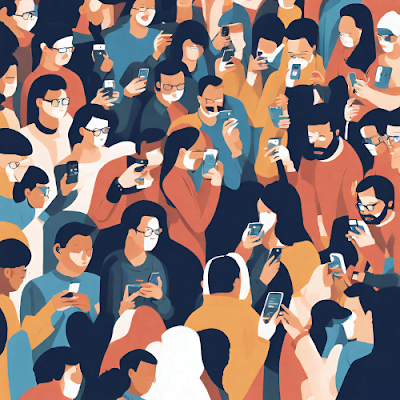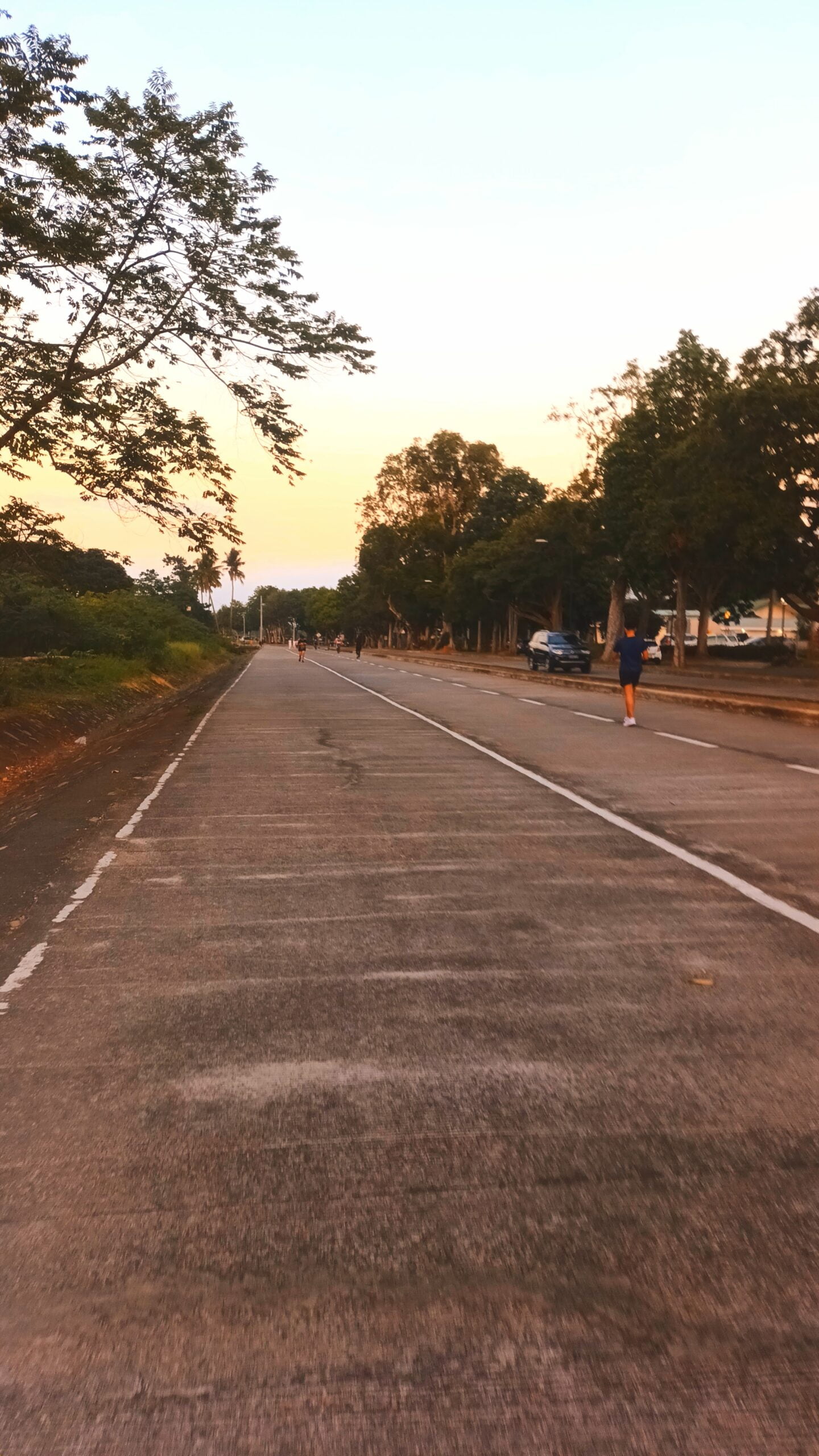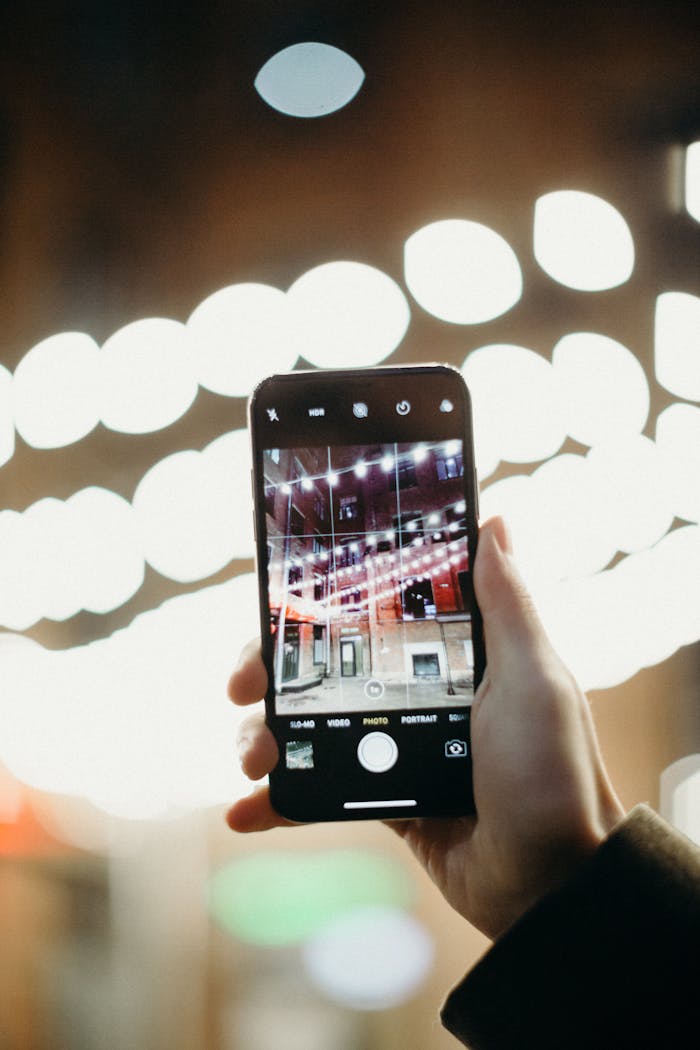“The Social Dilemma,” a 2020 American docudrama directed by Jeff Orlowski and written by Orlowski, Davis Coombe, and Vickie Curtis, sheds light on the detrimental social impacts of social media.
This documentary delves into the psychological foundations and manipulation strategies that, according to its narrative, social media and technology companies employ to addict users.
These companies monitor, track, and measure people’s online activities, utilizing the gathered data to construct artificial intelligence models that forecast user actions.

Wei Jhen Liang and Fei Victor Lim
Last Wednesday, while I was on my way to Pili Drive for an afternoon jog, I noticed a group of students alongside the basketball court of Pedro R. Sandoval Avenue, a short distance from Landbank. I don’t think they were players because it seemed they were not dressed for basketball game at that time. I assume they were just friends or bystanders.

The interesting thing I noticed about them is that only two students from the group were paying attention to their surroundings. They were looking at the passing jeepneys and the various pedestrians, including students going home and people going to church. The rest of the group remained static, as if under a spell, facing their smart phones.
At that moment, I recalled the movie “The Social Dilemma” and silently reflected to myself. Indeed, we are truly under the spell of manipulation through our cellular devices.
My mind affirmed this thought as I instantly remembered the lines of Ms. Annabelle Rama, dubbed and made fun of by netizens, circulating online, particularly on Facebook, where she says, “Nakikita mo naman. Diba? Nakikita mo naman, hindi na kailangang magsalita pa. Nakikita mo na ‘yan. Diba?”
In this modern era, technology plays an important role in our lives. Today, it seems that our smart phones have become more crucial than anything else. The majority of us are glued to our cellular devices; before going to bed, there’s the phone, and when we wake up early in the morning, one of the first things we do is check the notifications on our phones.
The movie “The Social Dilemma” served as an eye-opener for me. Everything mentioned in the movie appears to be true, and as I look around, it is right in front of my eyes, just like the example I mentioned above.
Right after watching the movie, my immediate response was to check my phone. I uninstalled all the applications that distract my attention, such as Facebook, Instagram, and Twitter. Additionally, for other applications that I deem necessary, like Messenger, YouTube, and others, I simply turned off their notifications.
The theme of the movie revolves around the disadvantages of social media, particularly its impact on teenagers. The increase in the number of teens experiencing issues such as suicide, depression, and political polarization highlights some of the adverse effects of social media and modern technology.
However, these consequences are seen as superficial, with the underlying problem being attributed to the economic system, which creates a macro-effect on the social structure and drives societal change.
My three major takeaways from the movie are:
1. Dominance of capitalism
The movie underscores the dominance of capitalism as a significant factor contributing to the issues associated with social media, using companies like Google as examples.
Despite not having an extensive understanding of economics, the film highlights how capitalism, driven by self-interest and the pursuit of immense wealth, resorts to manipulative strategies, exploiting not only its employees but the global population for profit.
Capitalists use advertisements and promotions incorporated into every video watched by online users, customized for each user through their algorithm. This approach provides a significant advantage in terms of marketing models compared to traditional business models.
2. Interconnectedness of Economic and Social Systems
The movie emphasizes the intricate connection between economic and social systems, illustrating a domino effect. It portrays how the economic system profoundly influences the behavior of various social systems, including families, political structures, cultural norms, and community dynamics.
Notably, the film places a major emphasis on the family system, down to an individual level, focusing on the lives of teenagers who are extensively exposed to technologies like social media.
The characters in the movie, namely Ben, Cassandra, and Isla, symbolize distinct attitudes towards social media as an integral part of their lives.
Ben, serving as the main character, embodies the experience of teenagers caught in the intermediary phase, navigating the pitfalls of social media.
Cassandra, Ben’s sister, becomes a representation of the generation gap within youth culture, displaying less attraction to social media compared to Gen Z.
On the other hand, Isla, the youngest daughter and a member of Gen Z, completely succumbs to the trap of social media addiction.
This narrative aligns with Bronfenbrenner’s ecological theory, wherein the economic system, positioned under the macrosystem, influences other systems—exosystem, mesosystem, microsystem—down to the individual level, and even over time in the chronosystem.
3. The human influence on change
The movie suggests that change is propelled by both natural forces and human activities, with human influence, particularly through the economic system, playing a pivotal role. Human activities, ranging from individual behaviors to economic structures and policies, significantly shape societal changes.
In the context of the movie, the transformative impact of technologies like social media is driven by the activities of capitalists, placing humanity within their profit-driven business matrix. To address this, the film suggests a need for humane policies and regulations governing the use of social media to steer change in a more positive direction.
I believe the movie merely scratches the surface of the social division unfolding in our society. If you think the film has already portrayed the worst aspects of technology, it only hints at the vast challenges awaiting humanity.
Just this week, I watched a video on YouTube about Apple’s latest release, the Apple Vision Pro. This device allows users to immerse themselves in a virtual world without any direct interaction with the physical environment, essentially acting as a blindfold for the digitally connected.
Addtionally, users can create virtual worlds based on their own perception of reality. This development signals a significant leap in technology, presenting both exciting possibilities and potential concerns for our future.
Moreover, this movie relates to the course Social and Cultural Change in UP as it portrays the two faces of change – utopia and dystopia. It also delves into the drivers of change and, most importantly, how it affects and shapes different social systems, down to the culture and values of an individual.
In the question of whether humanity as a whole is progressing or regressing, my answer is that it depends on the lens through which someone is looking.
In my perspective from the field of Agriculture, similar to the concept of utopia and dystopia, in terms of technological advancement, particularly in helping farmers ease the burden of agricultural production, we are progressing.
However, when I examine it from the social and cultural perspective, especially considering the impact of technology or social media on the younger generation, referred to by Dr. Jose Rizal as the “pag-asa ng bayan,” we are regressing.
Why? . . . A simple observation of our surroundings provides the answer.

